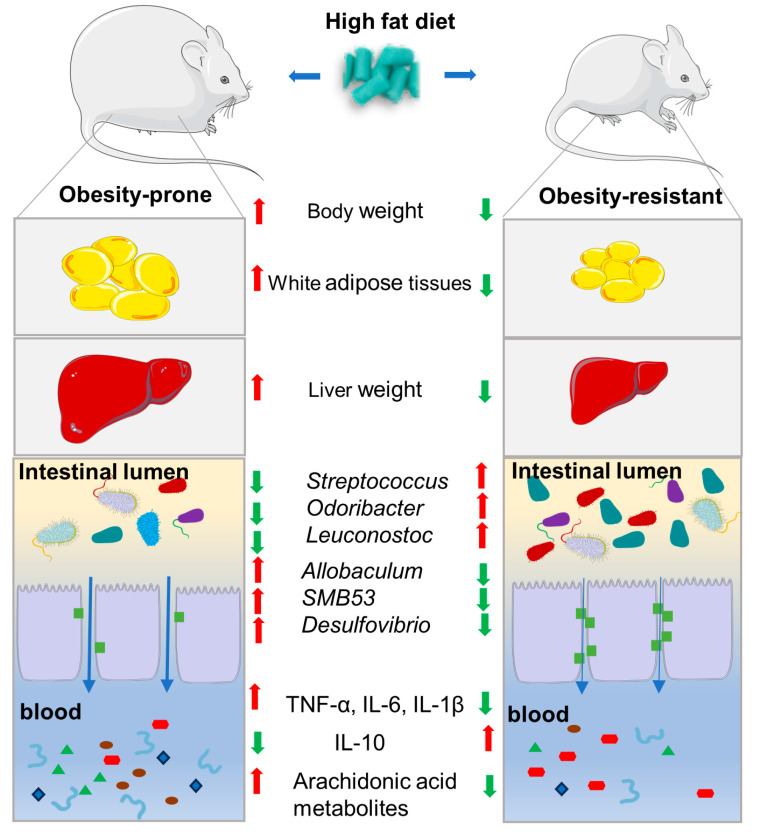Obesity, a global health concern, commonly linked to an imbalance between energy intake and expenditure. Even among individuals with comparable living conditions and eating habits, there are notable individual differences in their susceptibility to obesity. Using male C57BL/6J mouse models, this study attempts to investigate the variables causing these variances, with a focus on developing obesity-resistant (HFD-R) and obesity-prone (HFD-P) mice. The study examines the physiological, biochemical, and microbial variations between the two groups by giving these mice high-fat diets for 16 weeks, offering insights into the mechanisms behind obesity resistance.
Methods
To investigate the factors influencing susceptibility to obesity, male C57BL/6J mice were fed high-fat diets for 16 weeks. Mice were classified as obesity-prone (HFD-P) if their body weight exceeded 1.2 times the average of a control group fed chow diets, and as obesity-resistant (HFD-R) if their body weight was less than 1.1 times the control average.
Physiological and biochemical parameters, including body weight, liver weight, adipose accumulation, and serum levels of pro-inflammatory cytokines (TNF-α, IL-6, and IL-1β), were measured.
Fecal microbiota analysis was conducted using 16S rRNA sequencing, and widely targeted metabolomics analysis identified differential metabolites, focusing on arachidonic acid (AA) metabolism. KEGG pathway analysis was used to determine the most enriched metabolic pathways.
Key Findings
- HFD-R mice exhibited significantly lower body weight, liver weight, and adipose accumulation compared to HFD-P mice.
- Inflammatory Markers: Serum levels of pro-inflammatory cytokines (TNF-α, IL-6, and IL-1β) were significantly lower in HFD-R mice, while anti-inflammatory cytokine IL-10 levels were higher.
- Microbiome Diversity: The fecal microbiota of HFD-R mice showed greater biodiversity and different structural composition compared to HFD-P mice.
- Bacterial Genera: The genera Allobaculumbiota, Desulfovibrio, and Clostridium were increased in HFD-P mice, whereas Streptococcus, Odoribacter, and Leuconostoc were enriched in HFD-R mice.
- Differential Metabolites: A total of 166 differential metabolites were identified, with significant reductions in AA metabolites in HFD-R mice.
- AA Metabolism: KEGG pathway analysis revealed AA metabolism as the most enriched pathway. Reduced AA metabolites were strongly correlated with lower pro-inflammatory cytokine levels and specific gut microbiota profiles in HFD-R mice.
This study highlights the significant physiological, biochemical, and microbiome differences between obesity-prone and obesity-resistant mice. The findings underscore the role of gut microbiota composition and AA metabolism in influencing obesity susceptibility. The reduction in AA metabolites and the presence of specific bacterial genera in HFD-R mice provide insights into potential biomarkers and therapeutic targets for obesity prevention and treatment.
Link to the study : https://tinyurl.com/4mbzy7xz
